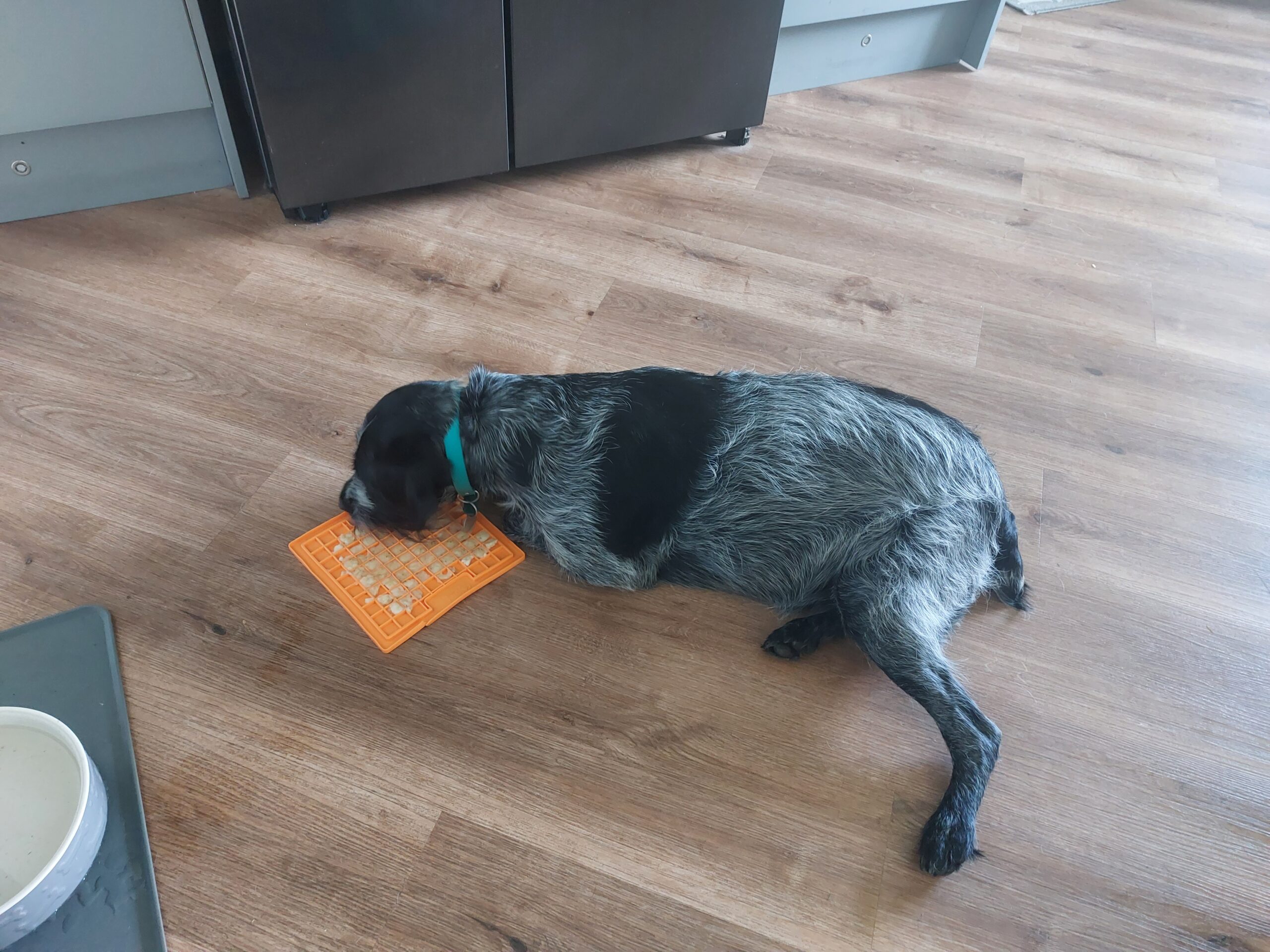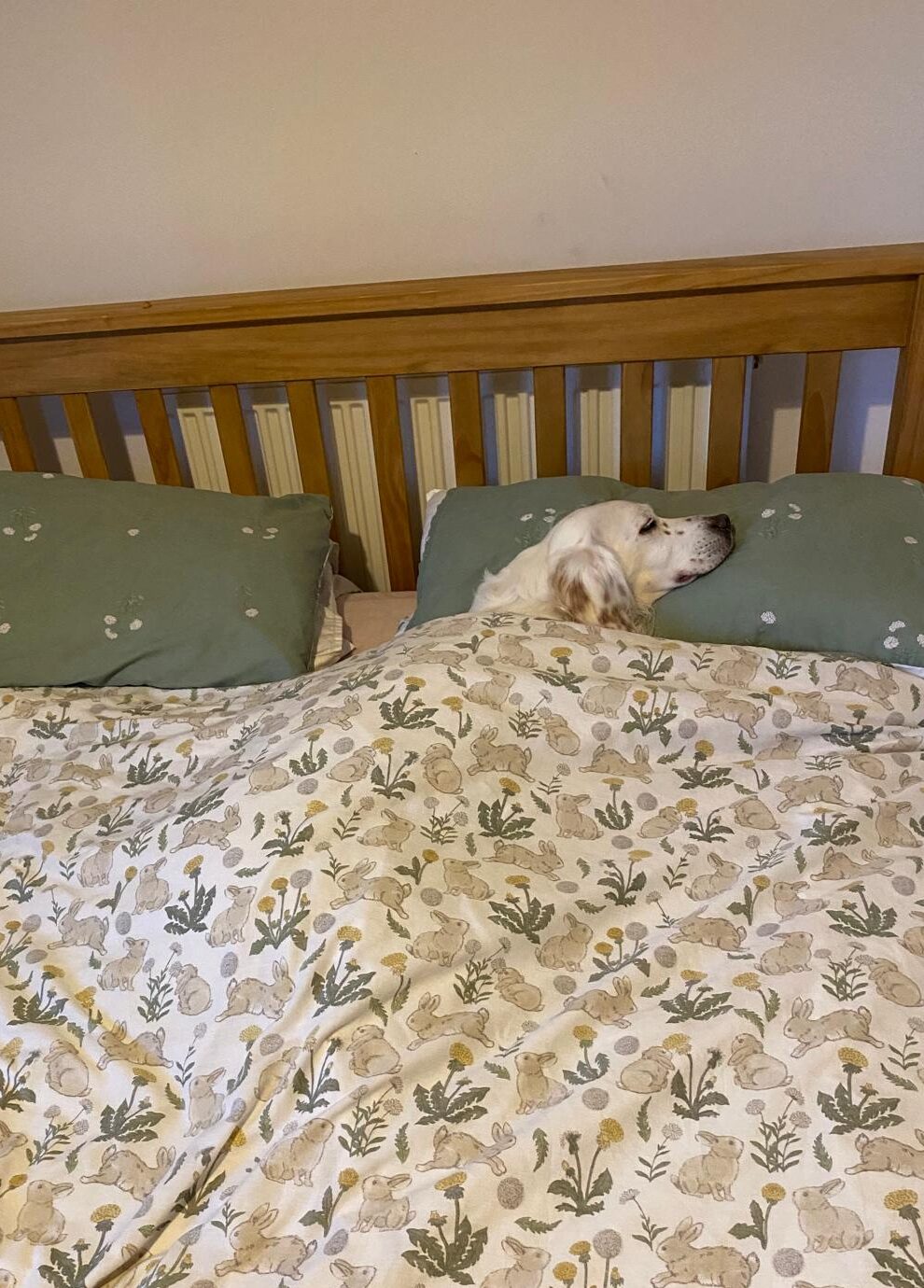The dogs we help are not used to living in a house, or even with people, and they may suffer from separation anxiety, particularly only dogs. When your dog arrives, it’s important to let them decompress after their journey, settle, and build up some confidence and independence in order to help them cope for periods of time home alone. You may find it’s easier to sleep downstairs with your dog in the first few days or weeks, or allow them to sleep in your bedroom. This doesn’t have to be a long-term solution but being flexible in the early days means a stress-free dog and, just as importantly, a good night’s sleep for all. Making sure your dog is happy through the night at the beginning of the adoption will mean they are able to cope with day-to-day life easier.
During the first few weeks, try not to leave your dog home alone for long periods of time as this can cause unnecessary stress. You can build up their confidence and independence by using the Flitting Game.
𝐓𝐇𝐄 𝐅𝐋𝐈𝐓𝐓𝐈𝐍𝐆 𝐆𝐀𝐌𝐄
𝐛𝐲 𝐄𝐦𝐦𝐚 𝐉𝐮𝐝𝐬𝐨𝐧
There’s a two part game I call ‘the flitting game’ – we pick two adjacent rooms, ideally kitchen and living room.
Set your timer on your phone (silently) for five minutes. Then make multiple trips during that five minutes from one room to the next, fiddle with something in one room, then move on.
As you do this, ignore your dog – as in don’t talk to him or touch him, but keep an eye on him – as he begins to settle … flit again.
Over the course of a few sessions you should find your dog becomes slower to get up, slower to settle, lurks in the hallway or in doorways, starts to look annoyed at you because this is now TEDIOUS… ugh and unrewarding.
It’s important to remember this is not some strict military regime, if you WANT your dog to come with, to talk to him, to fuss, him, fine, outside these sessions invite him along.
The point is that when you do not invite him, it might not be worth his effort to follow you… and when he realises that, you can then occasionally add in a good reason NOT to choose following you.
So step two is to add that reason in – a big juicy bone, a big filled Kong, something that’s highly rewarding and a pain in the backside to lift and carry around.
Now repeat the flitting, if he chooses not to follow you, try to stay a little less time in the ‘away’ room, a little more in the ‘home’ room, and build up gradually, second by second.
Do not always give the Kong or bone, carry on doing sessions without, and very gradually build up to other rooms and longer durations away.
At any point your dog is free to come and check, if he does that’s fine, don’t say hi or anything but make a mental note that perhaps this was a step too far and to scale back.
The idea is that your dog learns that it is his own choice not to follow and sometimes, that choice is highly reinforcing, sometimes it is just saving him some tedium and effort. He is free to check up if he’s worried, there’s no force or pressure at all.



